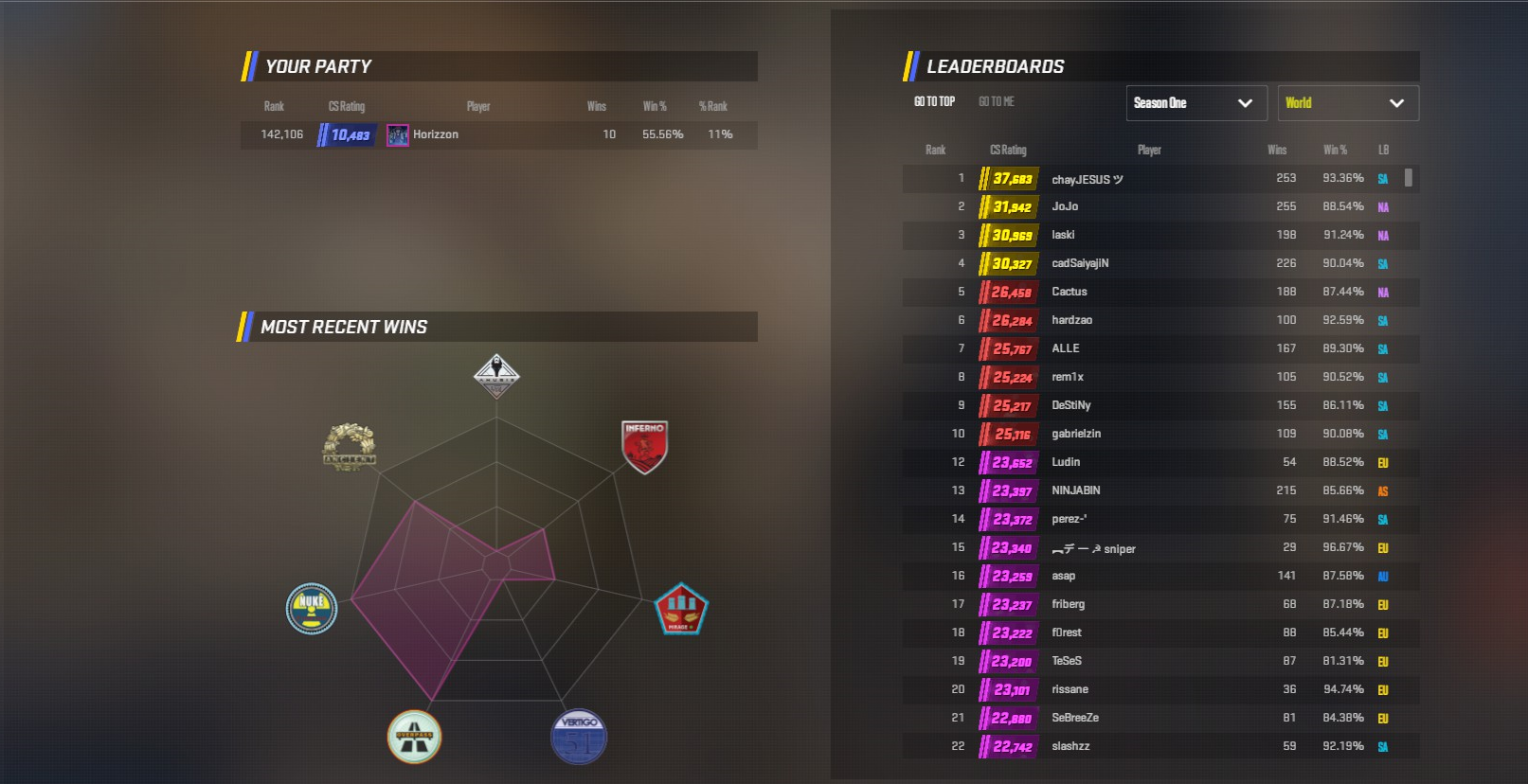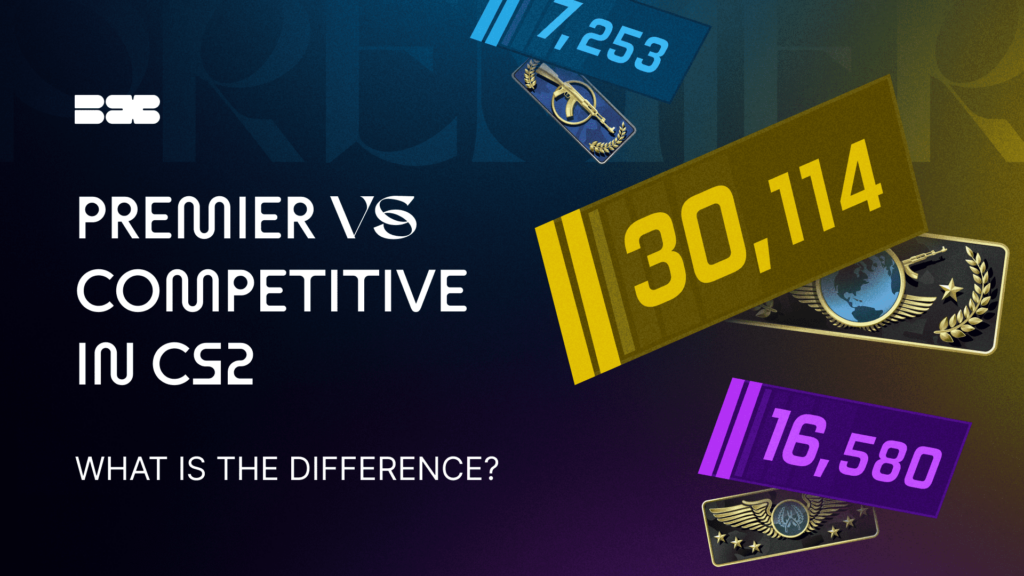As Valve usher us into a new Counter-Strike era, they’ve taken the liberty to completely overhaul the Matchmaking system. MM in CS:GO used to be very simple, play the game, get a rank, get the rank higher. You could pick the maps ahead of time and queue no questions asked.
Then during Operation Broken Fang a new form of Matchmaking was introduced, Premier mode. The gimmick was that it’d let you ban maps after you get into the game, similar to how pro teams pick/ban. This mode was then retained after Operation Broken Fang ended, becoming an alternate mode, but serving the same purpose as Competitive. Your rank was entirely the same, including how ranking up worked.
For CS2 Valve has overhauled the whole system. The Premier mode has become the, well, premier place to play CS2. The game mode itself has been overhauled with new UI elements allowing you to pick/ban in the menu itself, before loading in. In CS:GO you’d be loaded into a waiting room map of sorts. Other than that though, the format is largely the same, pick/ban, play game (in MR12 this time), get rank. But it’s in getting your rank that Valve has put in an overhaul.
Instead of using the Competitive ranks of old (which we’ll get to) Valve has added a new number-based ranking system, quite similar to, but not quite, FACEIT’s ELO. You gain/lose an amount for winning/losing usually in the 100s sum. The goal is to get as high of a number as possible.
Your rank changes colors after 5000 points, and when you’re near a color change you hit a promotion or relegation match. In the game before that, you’ll be handicapped in terms of how much you can gain to hit the barrier for example 4999 or 5000. Those two numbers were chosen because going over 4999 changes your color and going under 5000 changes your color. When you hit either, your rank will also get an animation to show that you’re on the edge. Plusses going up for promotion, arrows pointing down for relegation.
This is all fine and dandy, but why does the rank you get matter? Well, Valve has thought of that too, introducing the all-new leaderboards.
 Credit: Valve
Credit: ValveLeaderboards let you see the highest-ranked players in your friends list, your region, and even the world. It gives you a chance to compare yourself to the people you look up to, like pros. In fact, boot up your game and look around it right now, you might find people like ropz and olofmeister or your favorite streamer around.
If you’re new to CS2, the amount of games might seem like a lot to catch up to, especially if you have lofty ambitions. But not to worry, these rankings aren’t permanent. As indicated by the ‘Season One’ tab above the leaderboard, rankings will be seasonal. The season dates aren’t confirmed, but the Beta leaks hinted at a Spring 2024 reset. It’s unclear right now how hard the reset will be, or if there’ll be any reward for those who finished high, but it’s safe to assume they won’t just leave it as is.
But that only answers half of our question, what the hell is Competitive now, and why is it different?
Well, the ranks are the same as GO, Silver 1 to Global Elite, but how they work has had quite a few changes to it. Instead of being a rank that covered all the maps you played, now you get a rank per map. For example: if you only played Vertigo in CS:GO but were really good at it, you could use that to get all the way up to Global Elite. Even if you were terrible at every other map. In CS2, if you played Vertigo all the time, you could get Global Elite as well, but only on Vertigo. The ranks are detached and therefore you could be Silver 1 on Inferno, Master Guardian Elite on Nuke, and Global on Vertigo. You do still need to play 10 placement games per map in order to get your rank, which can be quite the process, but MR12 makes it less tedious than it was in Global Offensive.
As a whole though, this is a very astute change by Valve. You can now practice maps you’re not comfortable on with no punishment to the rank that actually matters. Instead, you’ll play people who are equally comfortable on a map as you. With Premier mode allowing any map in the active duty pool, having this as a proving ground for the now-new king of Skill Based Matchmaking in Counter-Strike is great.
As an added bonus, people who are really into Counter-Strike often have friends who aren’t in the same skill bracket as them, making it hard to play together. Having a non-vital way to play ranked together allows people to match up with friends and help them grow as players. This does mean balancing will probably not be the greatest, and we’re curious to see how Valve handles that long-term, if at all. But giving people the option to play with friends is huge in CS2’s current state, where the casual game modes are quite lacking. This mode is exactly what the game needs right now.
So these are the game modes. Premier brings a new sort of competition to our Counter-Strike servers, incentivizing lots of games and consistency. Whilst Competitive has turned into a way to perfect every map, one by one.
Valve has done a good job of giving them a clear distinct purpose in Counter-Strike 2, whereas in GO they were two sides of the same coin. Premier was always an interesting idea, held down by the fact that there was no real reason to play it over Competitive, where you can simply not play maps you like. The average CS2 player will be more well-rounded in the long term, which can only be a good thing. So go on, practice your maps in Competitive, win your ELO in Premier, and top those Season One leaderboards.


